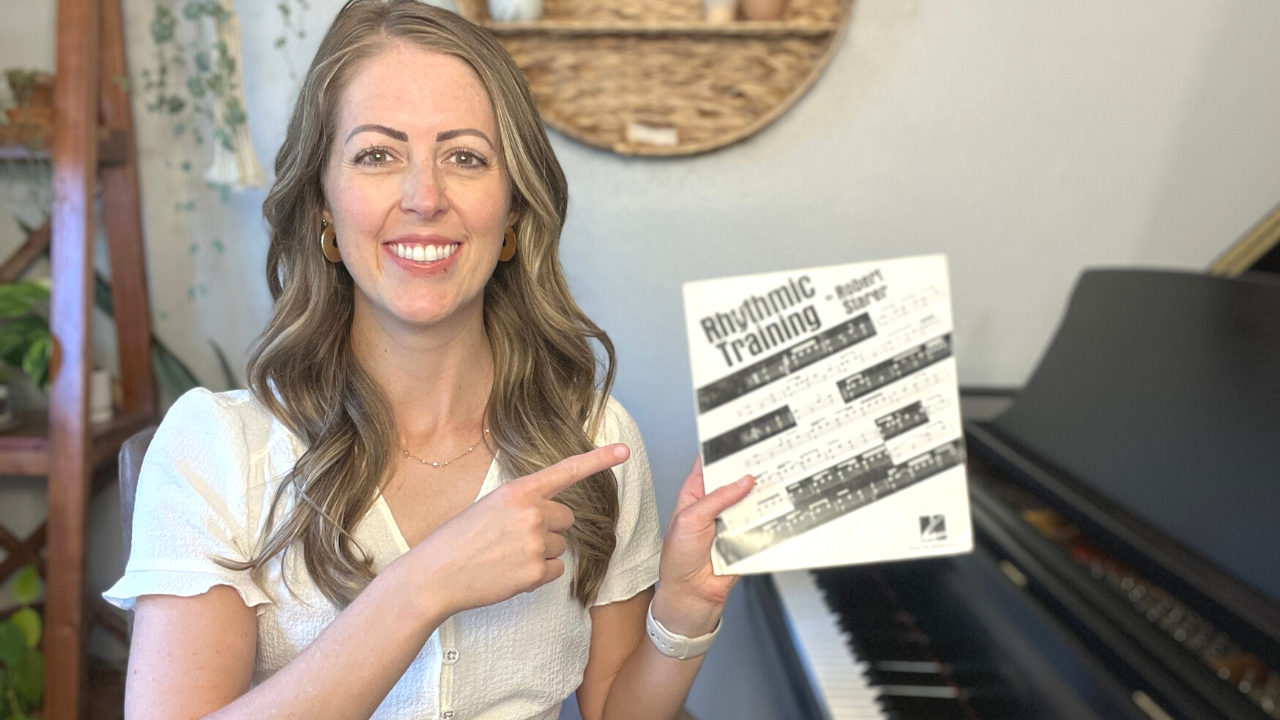Improve Rhythm INSTANTLY with Rhythmic Training by Robert Starer
Aug 10, 2023
Aspiring pianists often find themselves hitting a plateau in their playing journey, unable to progress further despite their efforts. One crucial aspect that can hold them back from achieving fluidity and freedom in their playing is rhythm. Many musicians underestimate the significance of rhythm and its impact on their overall performance. In this blog post, we'll explore why rhythm is essential, the challenges it poses, and how to overcome them using Robert Starr's "Rhythmic Training" book.
Rhythm: More Than Meets the Eye
Rhythm is not just about interpreting note values on a page correctly. It involves how your brain processes complex information. To play with accuracy, flow, and expression, you need to acquire the skill set of good rhythm. It's not something that can be comprehended in the moment but requires separate and consistent practice to master.
Dedicate Time to Rhythm Practice
One of the biggest mistakes pianists make is neglecting dedicated rhythm practice. To overcome this, devote a few minutes in each practice session to focus solely on rhythm. Using Robert Starr's "Rhythmic Training" book, select one small example and work on it with consistency. The benefits will be immense, and you'll notice improvements in your playing quickly.
Start at the Beginning
Many piano players skip over rhythm training, assuming they can handle complex pieces without building a solid rhythmic foundation. However, starting from the basics and working your way up ensures that you don't have gaps in your rhythm skills. Don't be afraid to go back to the beginning; it will speed up your progress in the long run.
Memorize Common Rhythmic Patterns
Memorizing the most common rhythmic patterns will boost your ability to comprehend and interpret music quickly. Robert Starr's book offers a breakdown of common patterns for triplets, eighth notes, and 16th notes. Practice these patterns individually with a metronome, focusing on accuracy and fluency. This will prepare you for more complex rhythms in music pieces.
Integrate Rhythm Practice into Your Routine
You don't need to overhaul your entire practice routine to incorporate rhythm training. Whether you're learning pieces, scales, or exercises, add three to five minutes of rhythm practice from the "Rhythmic Training" book. By doing this consistently, you'll notice improvements across all aspects of your playing in just a couple of weeks.
Rhythm is a fundamental aspect of piano playing that is often underestimated. To reach your full potential as a pianist, pay attention to rhythm and dedicate specific practice time to master it. Using Robert Starr's "Rhythmic Training" book, you can develop a strong rhythmic foundation and enhance your playing fluidity, accuracy, and expression. Remember, with consistent and focused practice, you can break through any plateau and achieve your musical goals. Happy playing!
Enrollment for Casual to Confident Piano Player is opening in September…
You can get on the VIP waitlist FOR FREE and once you’re on that list:
- You get access to a spot before the general public
- Upon enrollment you get a VIP waitlist bonus that is ONLY available to people on the waitlist.
Join the VIP Waitlist HERE (it’s totally free to join)!
Sight reading is the secret sauce behind beautiful and accurate piano playing that no one’s talking about!
Stay connected with news and updates!
Join our mailing list to receive the latest news and updates from our team.
Don't worry, your information will not be shared.
We hate SPAM. We will never sell your information, for any reason.
